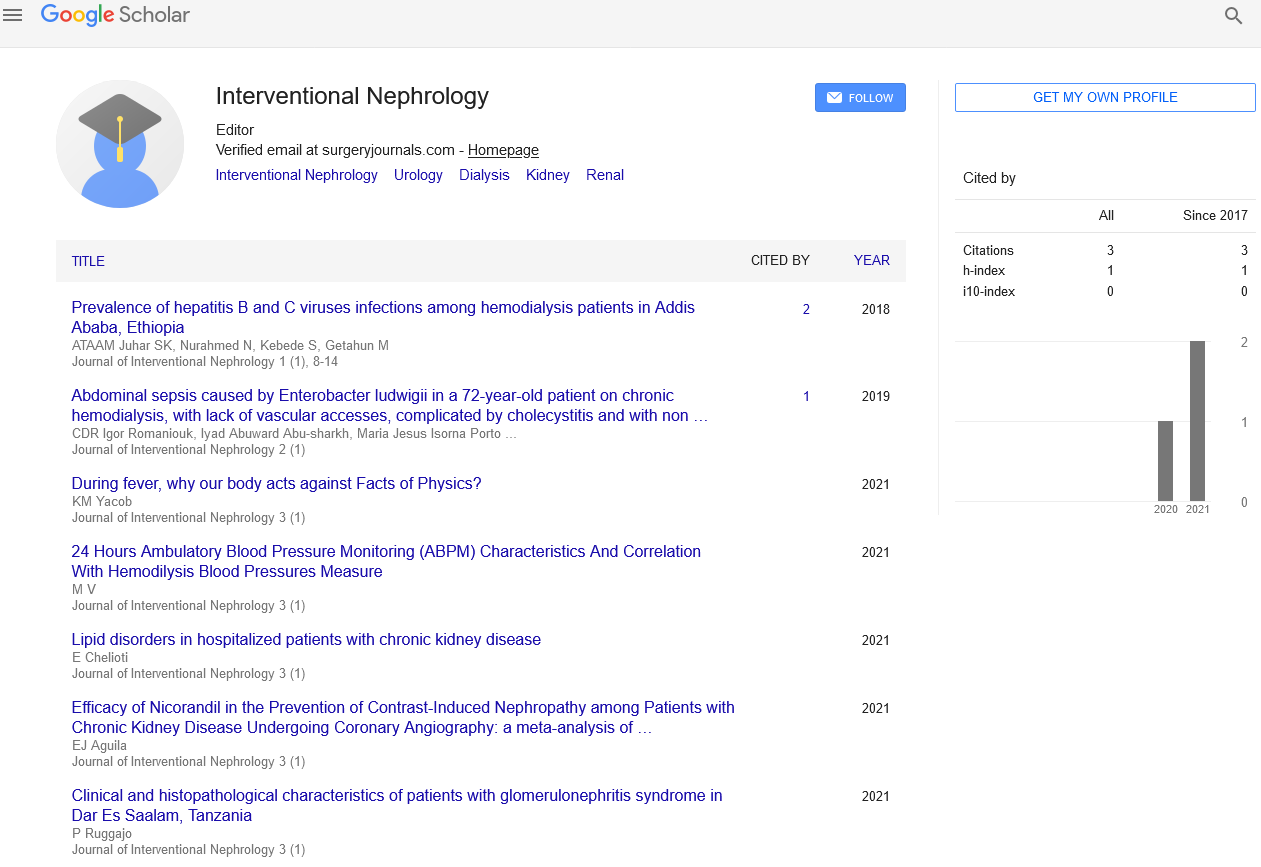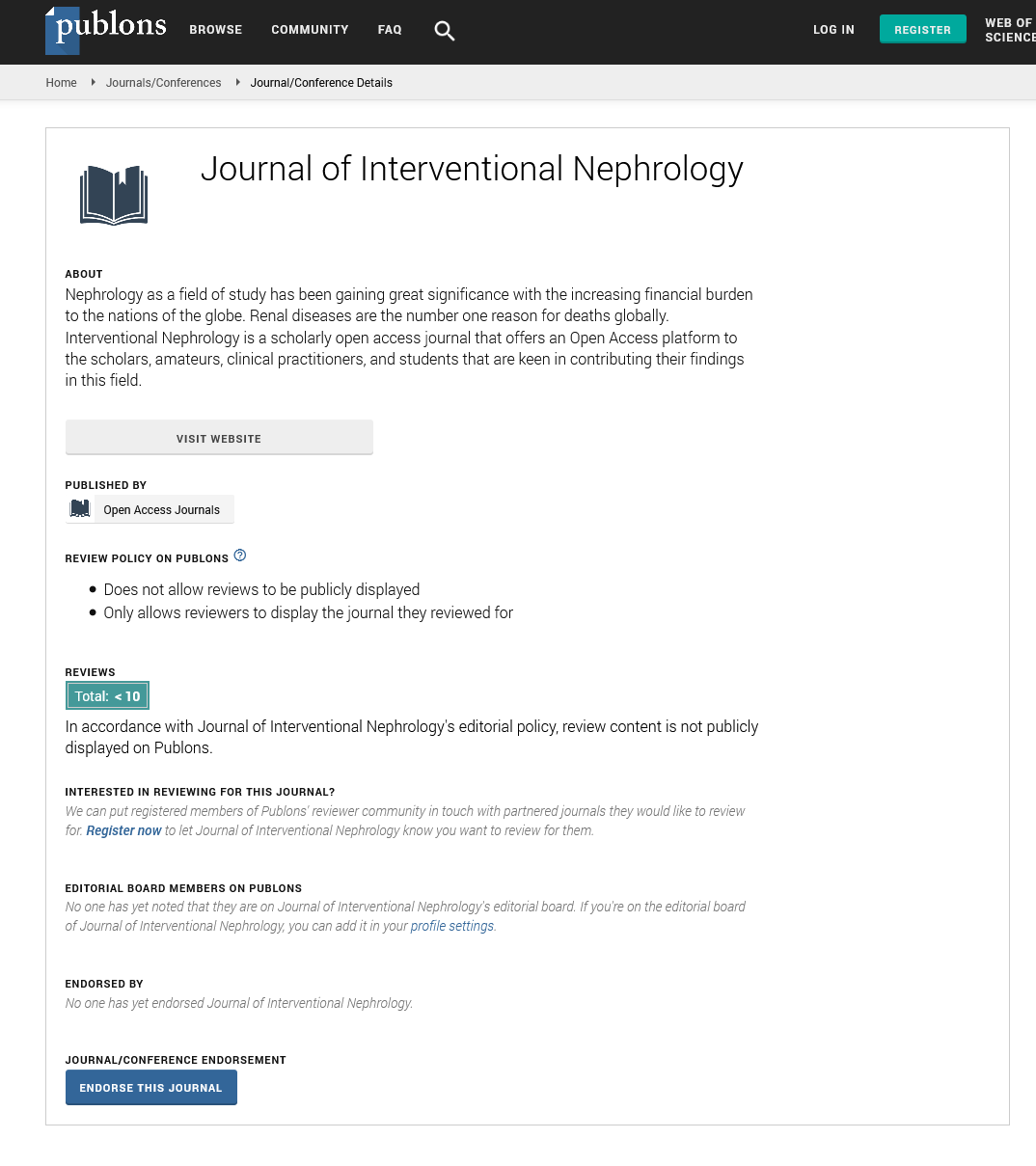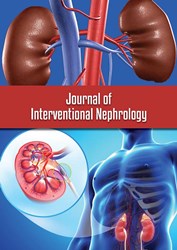Perspective - Journal of Interventional Nephrology (2024) Volume 7, Issue 2
Unlocking the Intricacies of Renal Sodium Excretion: Mechanisms, Regulation, and Clinical Significance
- Corresponding Author:
- Annalisa Cornali
Department of Medicine,
University of New Haven,
Nigeria
E-mail: Ac0011gmn@edu
Received: 21-Mar-2024, Manuscript No. OAIN-24-130217; Editor assigned: 22-Mar-2024, PreQC No. OAIN-24-130217 (PQ); Reviewed: 05-Apr-2024, QC No. OAIN-24- 130217; Revised: 12-Apr-2024, Manuscript No. OAIN-24-130217 (R); Published: 22-Apr-2024, DOI: 10.47532/oain.2024.7(2).248-249
Introduction
Renal sodium excretion plays a pivotal role in maintaining electrolyte balance, blood pressure regulation, and overall fluid homeostasis within the body. In this comprehensive article, we delve into the complexities of renal sodium handling, elucidating the underlying mechanisms, regulatory pathways, and clinical implications of sodium excretion in the kidneys.
Understanding renal sodium excretion
Sodium, a fundamental electrolyte, plays a crucial role in various physiological processes, including cellular signaling, fluid balance, and osmotic regulation. The kidneys play a central role in maintaining sodium balance by adjusting the rate of sodium reabsorption and excretion along the renal tubules, primarily in the proximal tubule, loop of Henle, distal tubule, and collecting ducts.
Description
Mechanisms of renal sodium handling
Proximal tubule: The majority of filtered sodium is reabsorbed in the proximal tubule via sodium-glucose cotransporters, sodiumhydrogen exchangers, and sodium-phosphate cotransporters, driven by the basolateral Na+/ K+ ATPase pump.
Loop of Henle: Sodium reabsorption in the thick ascending limb of the loop of Henle is mediated by the Na+/K+/2Cl- Co-transporter (NKCC2), facilitating the generation of a hypertonic medullary interstitium essential for water reabsorption in the distal nephron.
Distal tubule and collecting ducts: Sodium reabsorption in the distal convoluted tubule and collecting ducts is regulated by aldosterone, which enhances sodium reabsorption through the Epithelial Sodium Channels (ENaC) and the Na+/K+ ATPase pump.
Regulation of renal sodium excretion
The Renin-Angiotensin-Aldosterone System (RAAS), Sympathetic Nervous System (SNS), and natriuretic peptides play key roles in regulating renal sodium excretion:
RAAS: Activation of the RAAS promotes sodium reabsorption in the proximal tubule and collecting ducts via aldosterone-mediated stimulation of ENaC and Na+/K+ ATPase pump activity.
SNS: Sympathetic nerve activity inhibits sodium excretion by promoting renal vasoconstriction and stimulating sodium reabsorption in the proximal tubule and collecting ducts.
Natriuretic peptides: Atrial Natriuretic Peptide (ANP) and Brain Natriuretic Peptide (BNP) exert natriuretic effects by inhibiting sodium reabsorption in the distal nephron and promoting vasodilation of the renal vasculature.
Clinical implications of renal sodium excretion
Hypertension: Dysregulation of renal sodium handling can contribute to the development of hypertension, with excessive sodium reabsorption leading to expanded extracellular fluid volume and increased cardiac output.
Edema: Impaired renal sodium excretion can result in fluid retention and edema formation, as seen in conditions such as heart failure, cirrhosis, and nephrotic syndrome.
Hyponatremia and hypernatremia: Disorders affecting renal sodium excretion, such as Syndrome of Inappropriate Antidiuretic Hormone secretion (SIADH) or diabetes insipidus, can lead to abnormalities in serum sodium levels.
Diagnostic evaluation of renal sodium handling
Assessing renal sodium excretion involves evaluating urinary sodium concentration, Fractional Excretion of Sodium (FENa), and urinary osmolality. Additionally, renal imaging studies, such as renal ultrasound or CT scan, may be performed to assess renal anatomy and identify structural abnormalities affecting sodium handling.
Therapeutic interventions
Management of disorders affecting renal sodium excretion may involve pharmacological agents targeting the RAAS (e.g., ACE inhibitors, angiotensin receptor blockers), diuretics (e.g., thiazides, loop diuretics), or vasodilators (e.g., nitrates, calcium channel blockers) to modulate sodium reabsorption and enhance sodium excretion.
Conclusion
Renal potassium excretion plays a crucial role in maintaining potassium homeostasis and electrolyte balance within the body. Through a nuanced understanding of the underlying mechanisms and regulatory pathways governing potassium handling in the kidneys, clinicians can effectively diagnose and manage potassium imbalances, striving to optimize patient outcomes and prevent associated complications.


